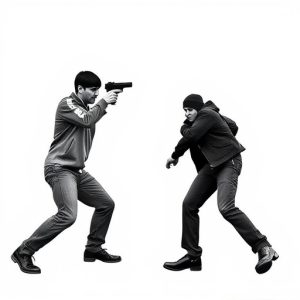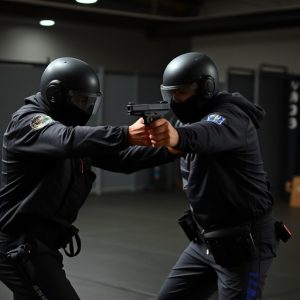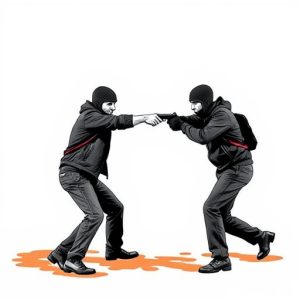Non-Lethal Weapon Training Certification: Safety, Legalities & Top Concealed Carry Stun Guns
Non-lethal weapon training is crucial for responsible firearms ownership, especially with the increa…….
Non-lethal weapon training is crucial for responsible firearms ownership, especially with the increasing popularity of stun guns as concealed carry weapons. Comprehensive training equips individuals with knowledge and skills to handle dangerous encounters effectively. Understanding stun gun capabilities and limitations enables informed decisions and safe deployment. Legal requirements, including age restrictions, training courses, background checks, and proficiency exams, must be followed for certification. The best concealed carry stun gun models are the Taser X26P and Olight S40, offering powerful outputs and advanced safety features or dual functionality. Training involves selecting accredited programs, learning de-escalation tactics, practicing skills through simulations, and adhering to local regulations. Prioritizing safety means treating devices as live, investing in quality models from reputable manufacturers, and maintaining proficiency through regular training. Non-lethal force is a last resort; continuous self-defense education and awareness are vital for personal safety.
“In today’s diverse and dynamic world, understanding non-lethal weapon training and its role in personal safety is paramount. This article explores the significance of certifying in non-lethal self-defense weapons, delving into legal requirements for carry permits and certifications. We present a comprehensive analysis of popular concealed carry stun guns, offering insights to aid your choice of the best models. Additionally, we guide you through the certification process and emphasize safety measures, ensuring responsible ownership.”
- Understanding Non-Lethal Weapon Training and Its Importance
- Legal Requirements for Non-Lethal Weapon Certification
- Popular Concealed Carry Stun Gun Models: A Comparative Analysis
- The Process of Obtaining a Non-Lethal Weapon Training Certification
- Safety Measures and Best Practices for Non-Lethal Self-Defense Weapons
Understanding Non-Lethal Weapon Training and Its Importance
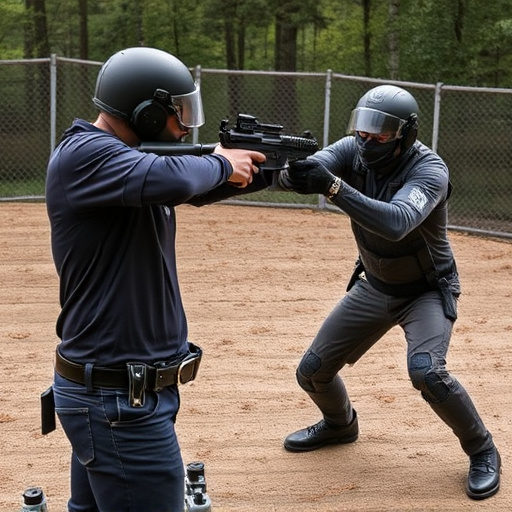
Non-lethal weapon training is an essential aspect of responsible firearms ownership and a key component in ensuring safety during various situations. It focuses on educating individuals about the use of alternative weapons designed to incapacitate or deter without causing permanent harm. These non-lethal force options, such as stun guns, are becoming increasingly popular among those seeking concealed carry weapons for personal protection. By providing certification, training programs empower individuals to make informed decisions and handle potentially dangerous encounters effectively.
For those considering a best concealed carry stun gun, proper training is crucial. It enables users to understand the device’s capabilities, limitations, and safe handling procedures. Through comprehensive courses, individuals learn proper deployment techniques, de-escalation strategies, and legal considerations related to non-lethal force. Such training fosters confidence and promotes responsible weapon ownership, ensuring that citizens are prepared to protect themselves and others without resorting to lethal force unless absolutely necessary.
Legal Requirements for Non-Lethal Weapon Certification
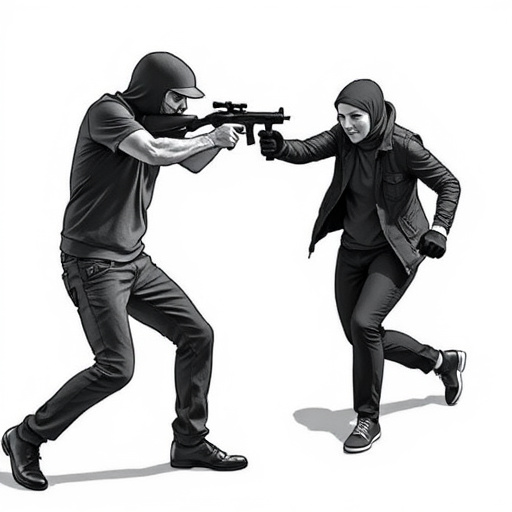
Obtaining a non-lethal weapon certification involves navigating a series of legal requirements designed to ensure responsible use and safety. The specific laws vary by jurisdiction, but typically include age restrictions, mandatory training courses, background checks, and passing an exam demonstrating proficiency in the safe handling and deployment of non-lethal weapons like stun guns. It’s crucial to understand these regulations before considering concealed carry permits for best concealed carry stun gun models.
Many regions mandate that individuals seeking certification complete a recognized training program that covers weapon mechanics, de-escalation techniques, and legal implications of using force. This training equips individuals with the knowledge needed to make informed decisions in potentially dangerous situations. Additionally, some areas require periodic recertification to ensure continued proficiency and familiarity with evolving laws and best practices.
Popular Concealed Carry Stun Gun Models: A Comparative Analysis
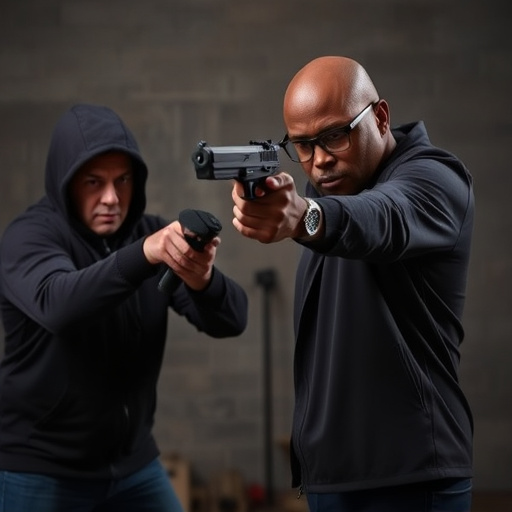
When it comes to choosing the best concealed carry stun gun models, several popular options stand out due to their reliability, ease of use, and compact size. One highly regarded choice is the Taser X26P, favored for its powerful 15,000 joule output and advanced safety features designed to minimize collateral damage. It’s a top pick among those seeking non-lethal self-defense options that pack a serious punch.
Another notable mention is the Olight S40, known for its innovative design combining a high-intensity LED flashlight with a stun gun function. This dual functionality makes it versatile, ideal for users who need both illumination and protection in low-light situations. The Olight S40 offers a strong 12,000 joule shock and is praised for its intuitive user interface, making it an attractive choice among concealed carry enthusiasts looking for the best in modern self-defense technology.
The Process of Obtaining a Non-Lethal Weapon Training Certification

Obtaining a non-lethal weapon training certification involves several steps designed to ensure safety and proficiency. The process typically begins with researching and selecting an accredited training program that aligns with your needs, whether for personal protection or professional law enforcement duties. Many programs specialize in specific non-lethal technologies, such as best concealed carry stun gun models, providing in-depth knowledge on their safe handling, deployment, and legal considerations.
During the training, participants learn not only the technical aspects of using these devices but also crucial de-escalation tactics and crisis management strategies. They engage in hands-on simulations and scenarios to sharpen their skills under controlled conditions. Successful completion of the course requires demonstrating proficiency in both theory and practical application, ensuring individuals are equipped to handle non-lethal weapons responsibly and effectively.
Safety Measures and Best Practices for Non-Lethal Self-Defense Weapons

When training with non-lethal self-defense weapons, such as stun guns, prioritizing safety is paramount. It’s crucial to familiarize yourself with your local regulations regarding concealed carry permits and the specific rules around stun gun use. Always treat these devices as if they are live, ensuring proper handling and storage to prevent accidental discharge. Invest in a high-quality stun gun from reputable manufacturers, focusing on models that offer advanced safety features like automatic shut-off mechanisms and durable designs for reliability in various situations.
Best practices extend beyond the weapon itself. Engaging in regular training sessions with certified instructors will enhance your proficiency and ensure you understand the range of safe distances and techniques for deployment. Remember, non-lethal force should only be used as a last resort; continuous self-defense education and awareness of your surroundings remain vital components of personal safety.
Non-lethal weapon training certification is a significant step towards responsible self-defense. Understanding legal requirements, familiarizing oneself with various stun gun models like top-rated concealed carry options, and adhering to safety measures are key components of this process. By completing the certification, individuals not only gain the skills needed for effective non-lethal force but also contribute to a safer society. Remember, the best defense is often one that avoids conflict; however, being prepared with knowledge and the right tools can make all the difference.
